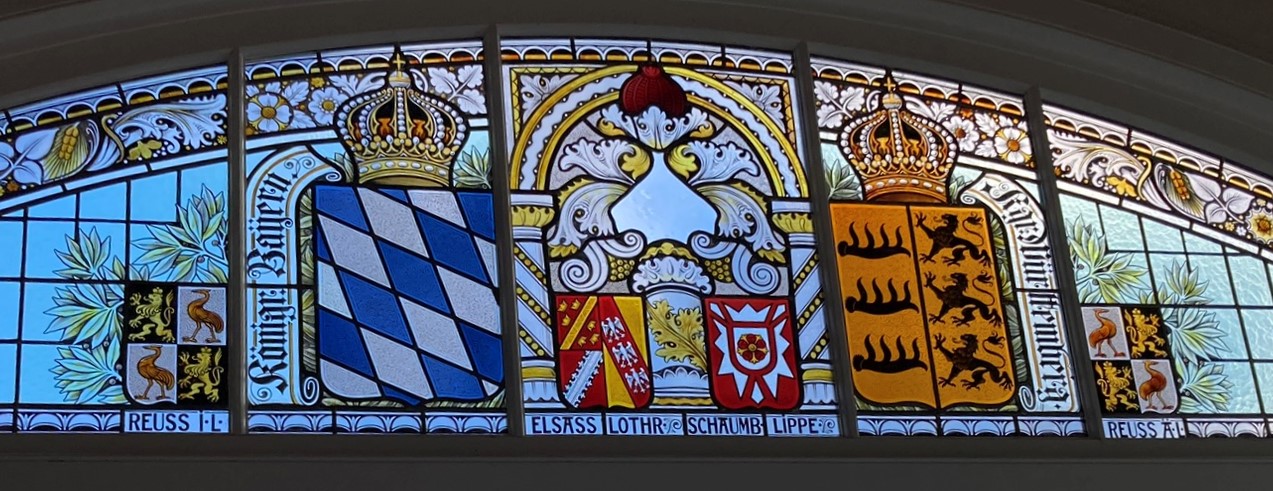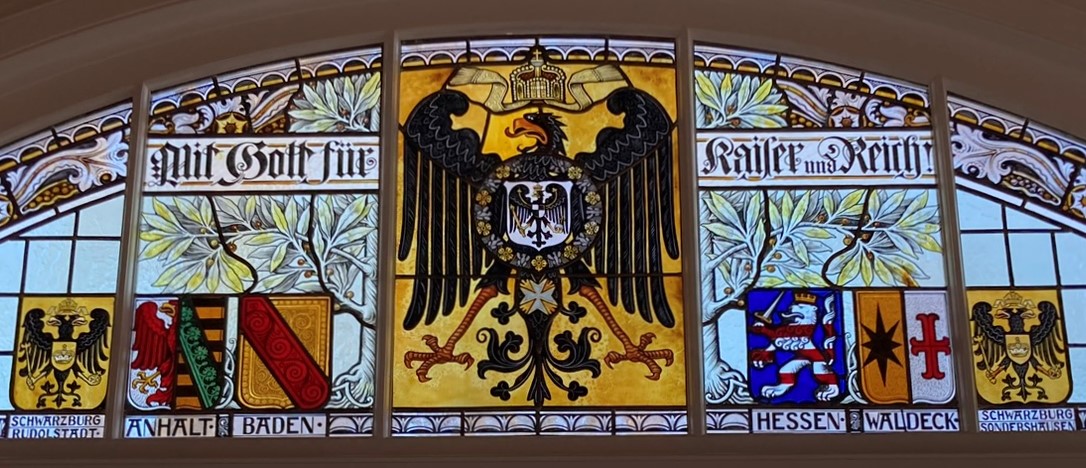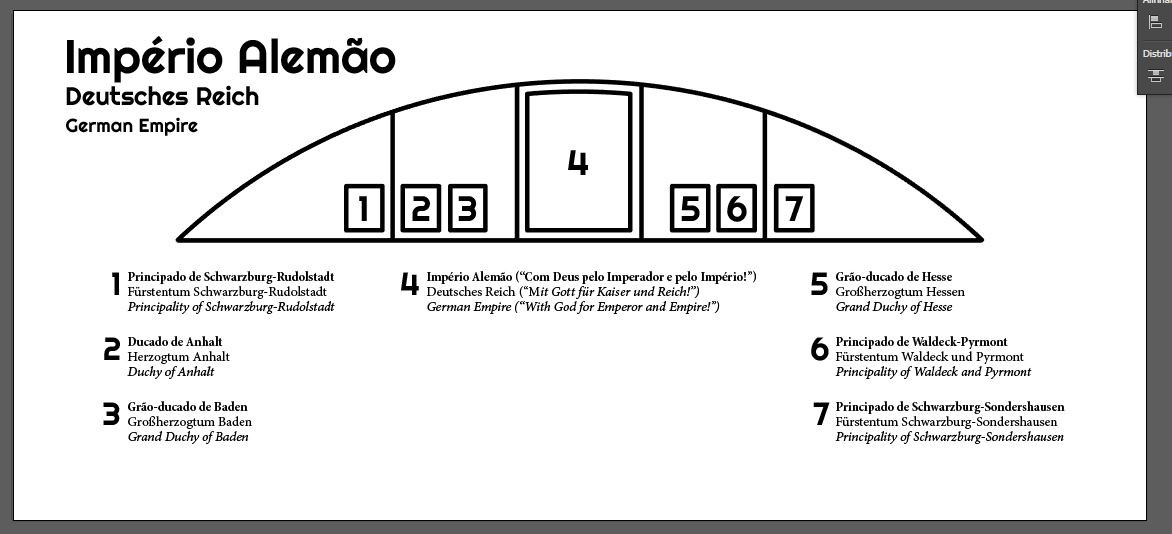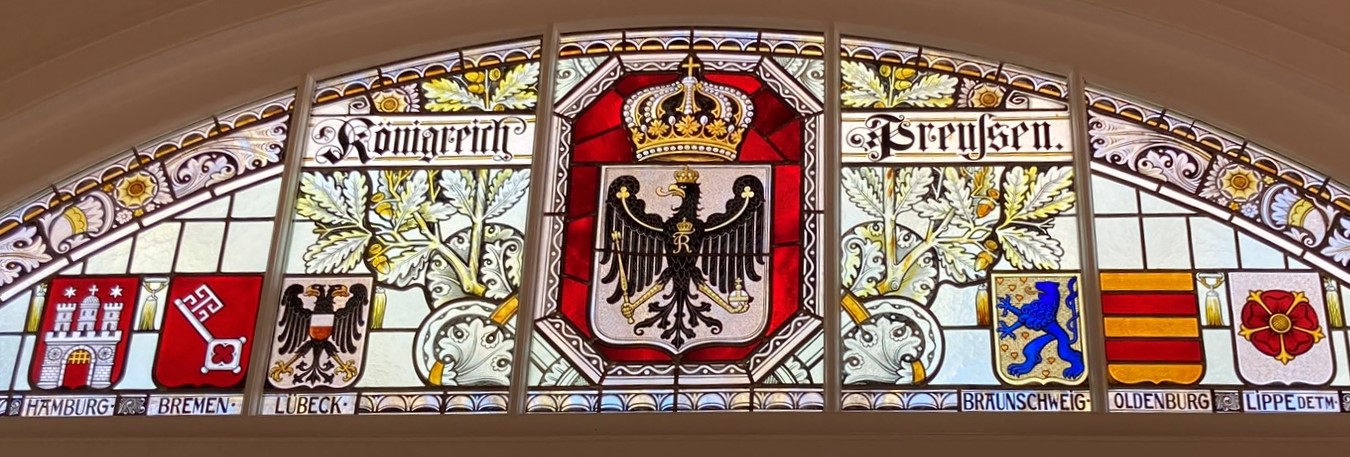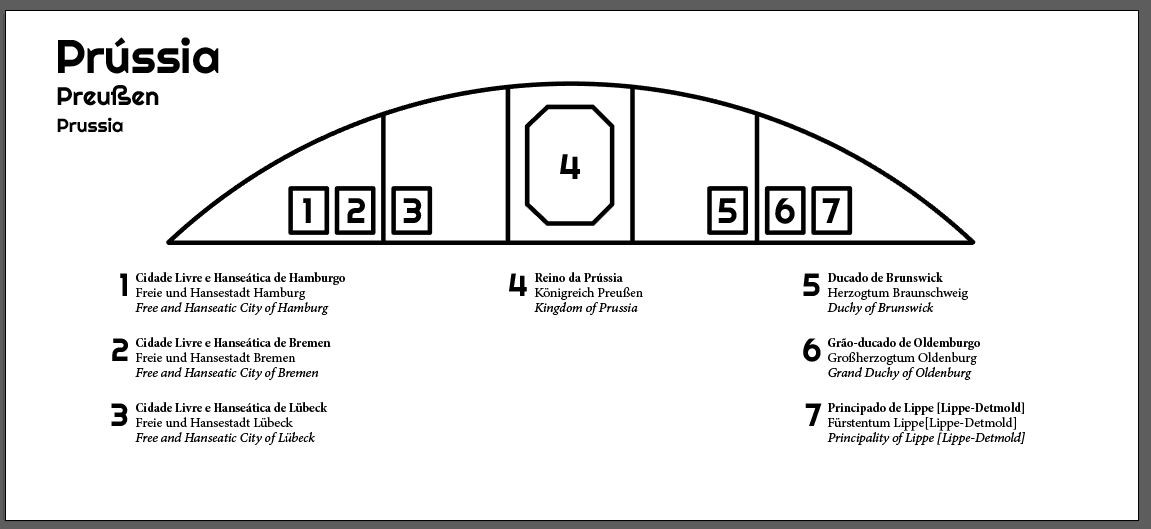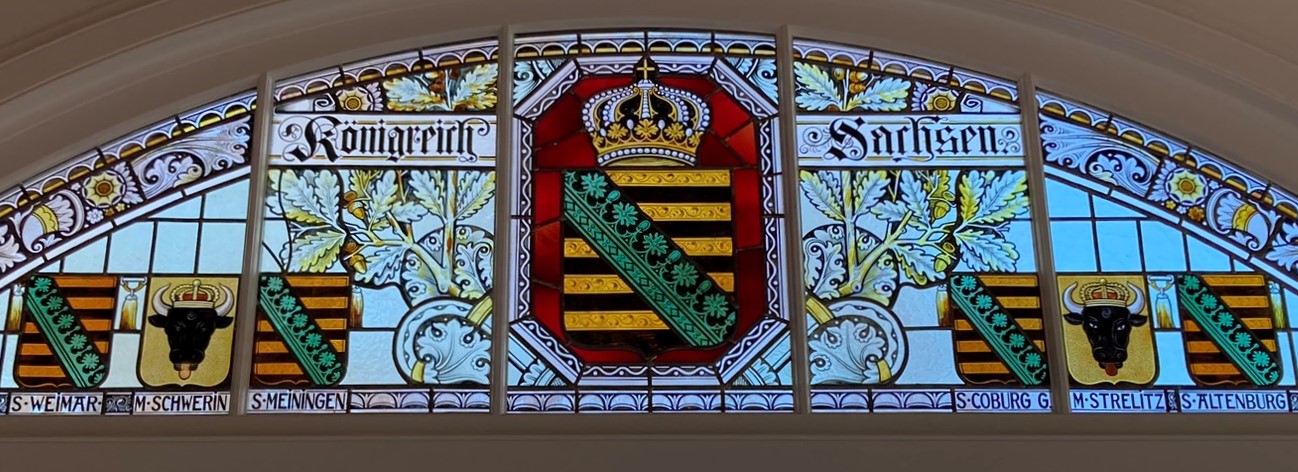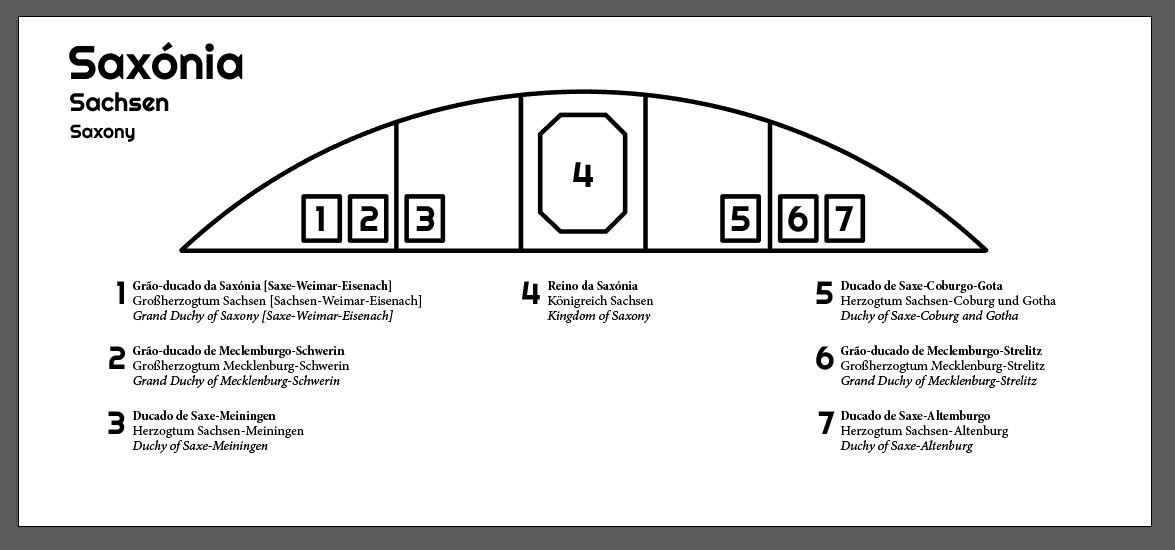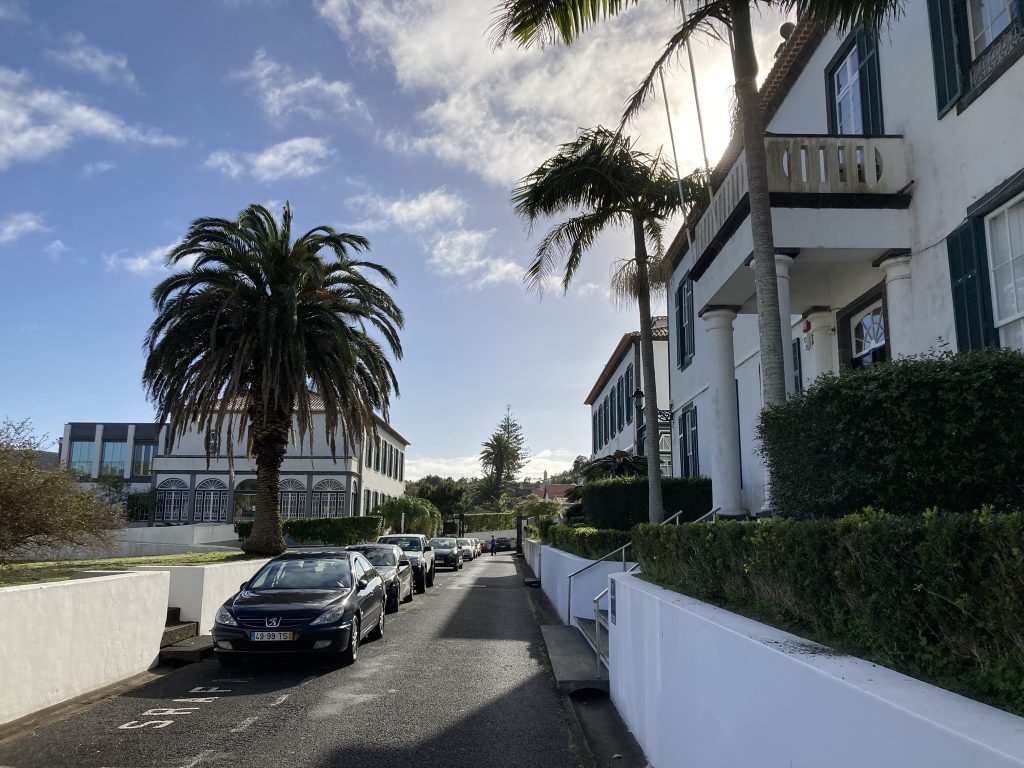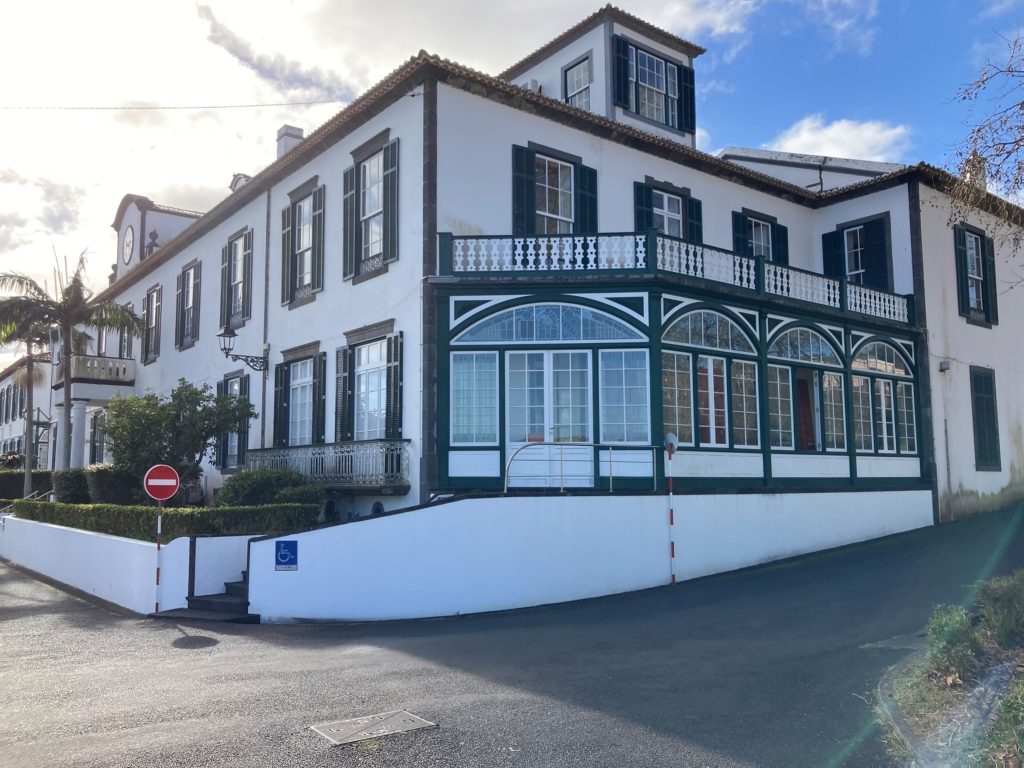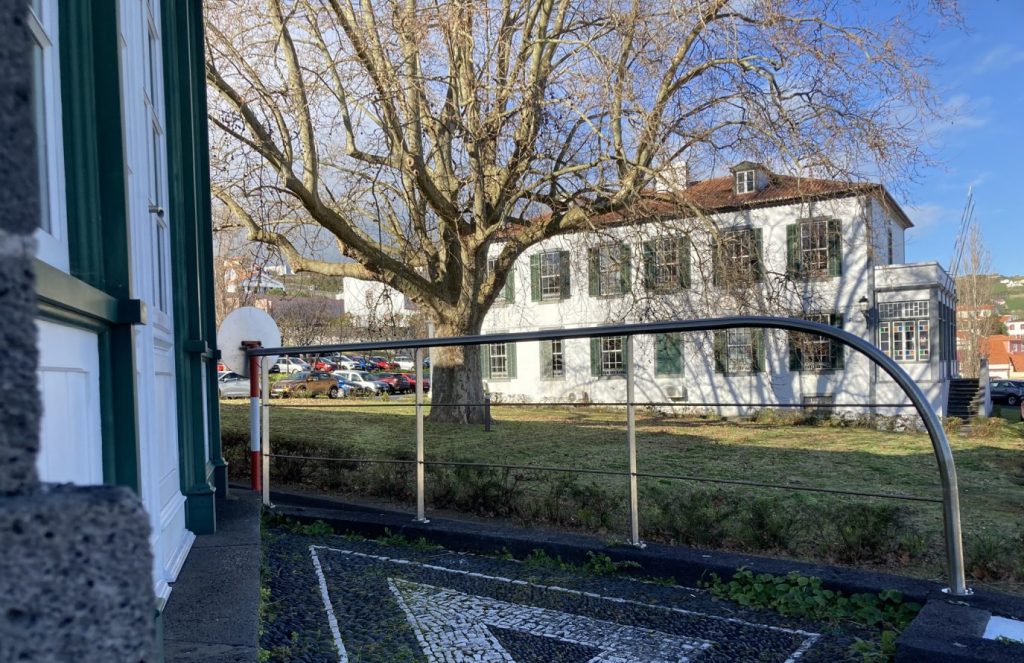The submarine cable and Faial
Global communications were revolutionized in the 1850s with the laying of the first submarine telegraph cables.
The landing point chosen for the main cables between Europe and America was Horta, an international port since the 17th century. These started to be laid in 1893 and until 1928, the island was connected by 15 cables, making it one of the world’s chief communication centers.
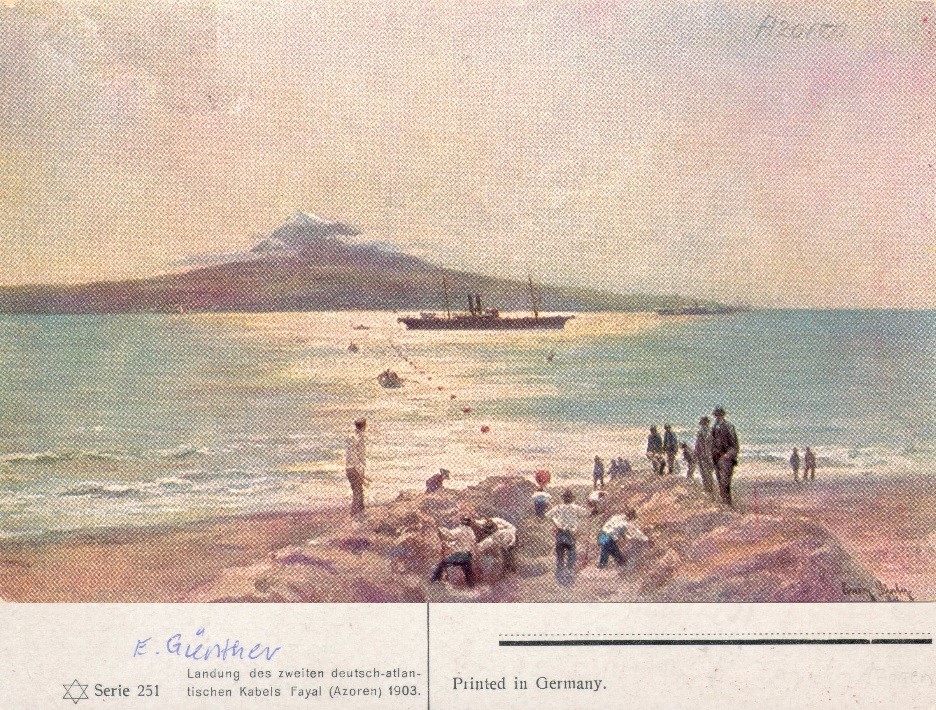
The submarine cable companies and DAT
The concessions for the connections via the Azores were awarded by the Portuguese government to the Europe & Azores Telegraph Co. – the English company – which sub-contracted the connections to other international companies. Thus, British, German and American personnel, representing four telegraph companies from their respective countries settled in Horta and also managed a French and an Italian cable.
In 1899, a contract was signed for the German-Azores connection leading to the founding of the Deutsch-Atlantische Telegraphengesellschaft (DAT) – the German company – which existed in Horta from May 1900 until World War II.
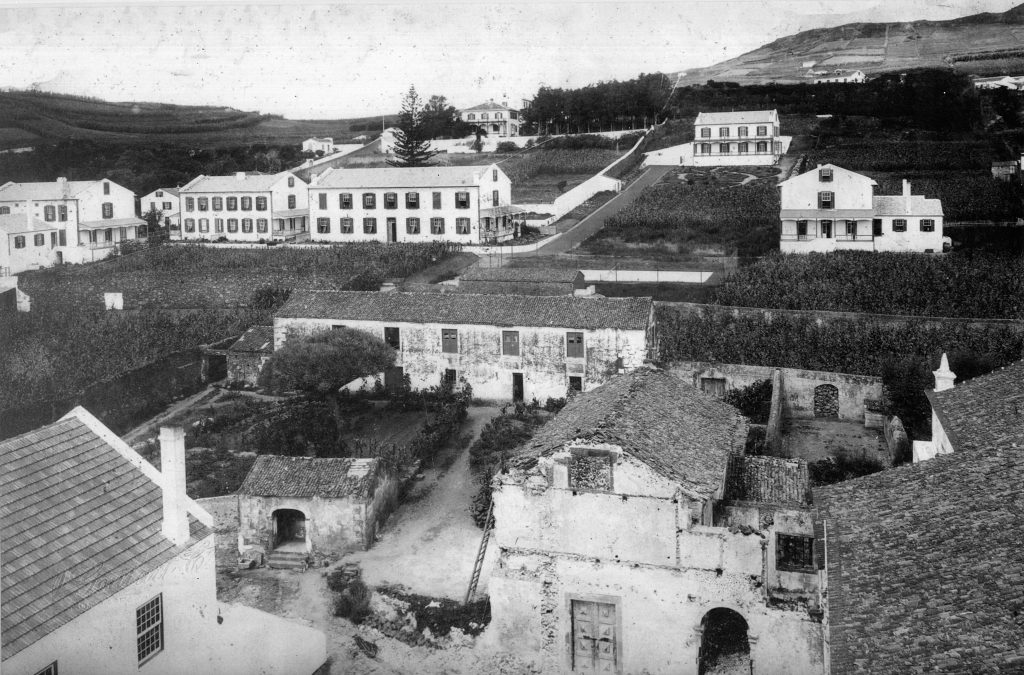
The German community in Horta
Similar to the other foreign companies, the Germans had an active social, cultural and sports calendar, employees married the locals and their presence, albeit cut short by the two world wars, left a mark on the local community.
 |
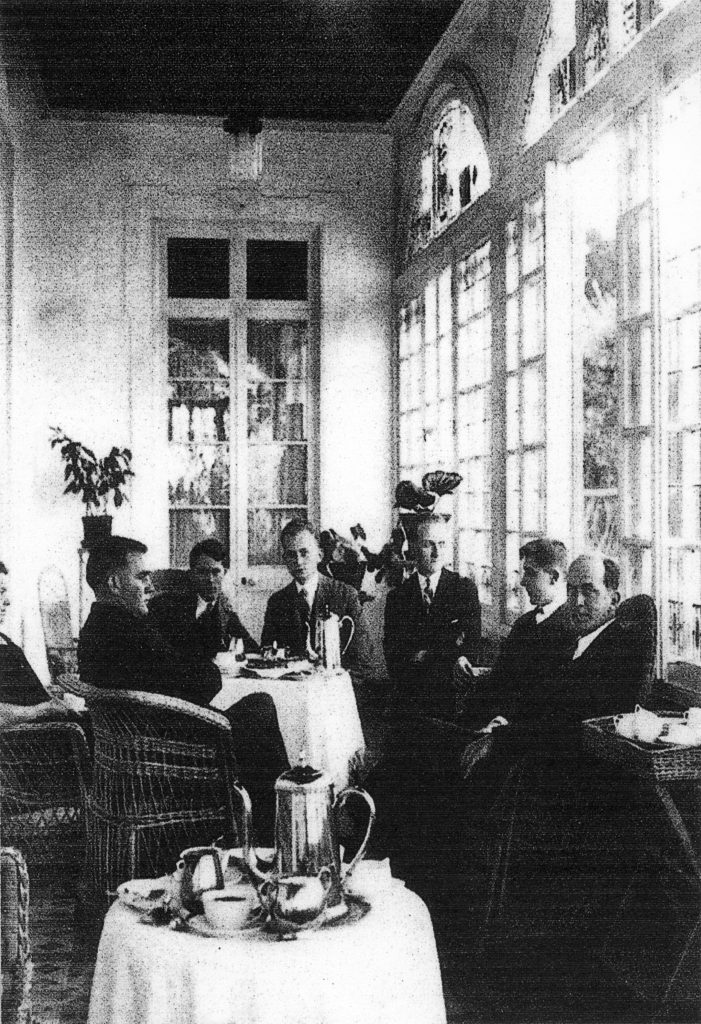 |
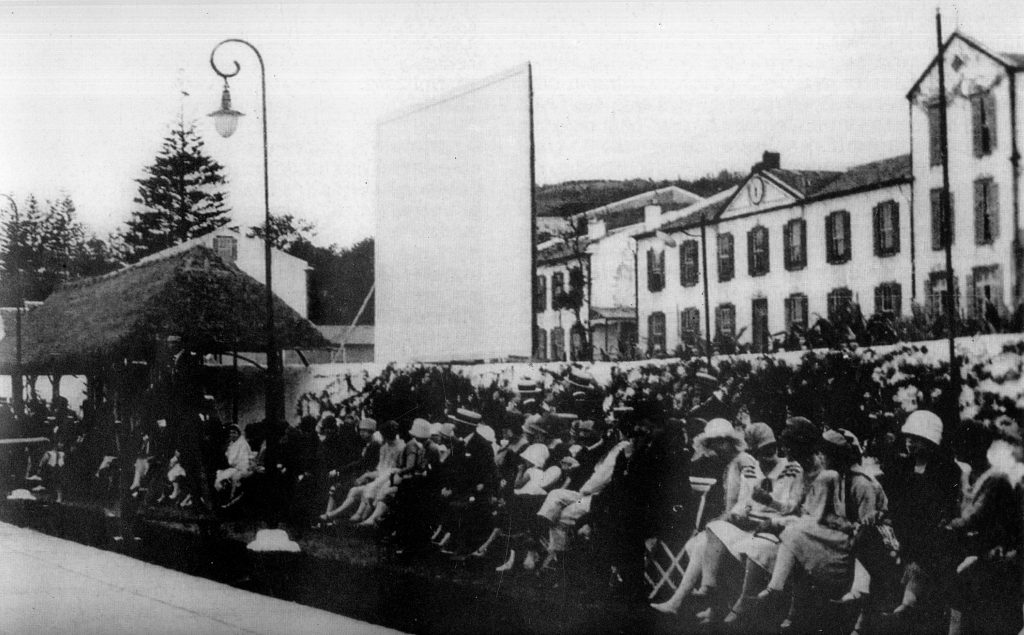
There were regular gatherings and parties at their homes, including receptions for their fellow countrymen visiting the island, many of which took place in this garden.

The “German Colony”
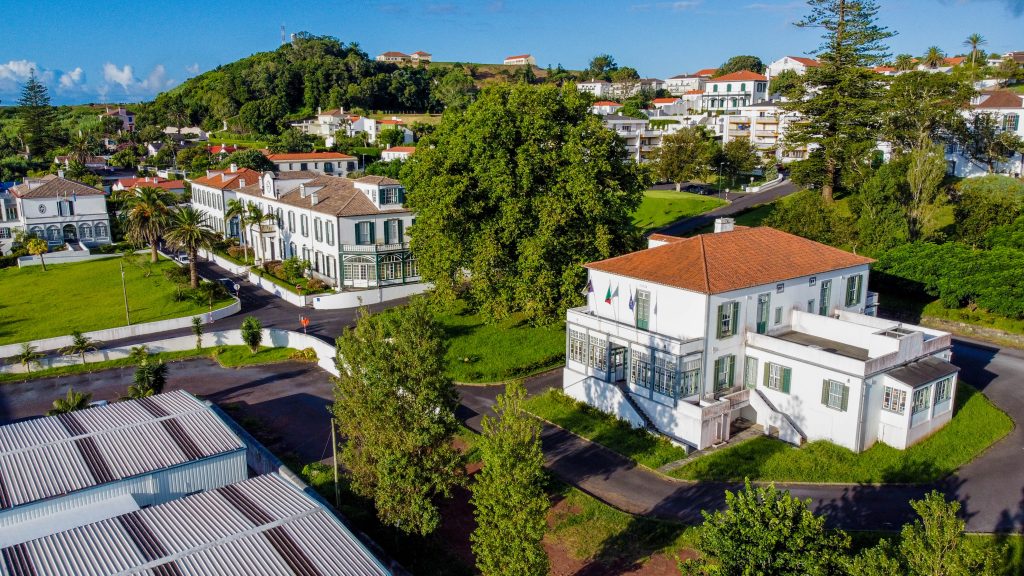
The original layout of the buildings in the German Colony, which are believed to have been built between 1905/6 and 1912, are unknown. The final and most complete iteration of the quarter was built after the 1926 earthquake when the buildings were heavily restructured. This reconstruction coincided with the return of the German employees to the city after their departure a decade earlier due to World War I.
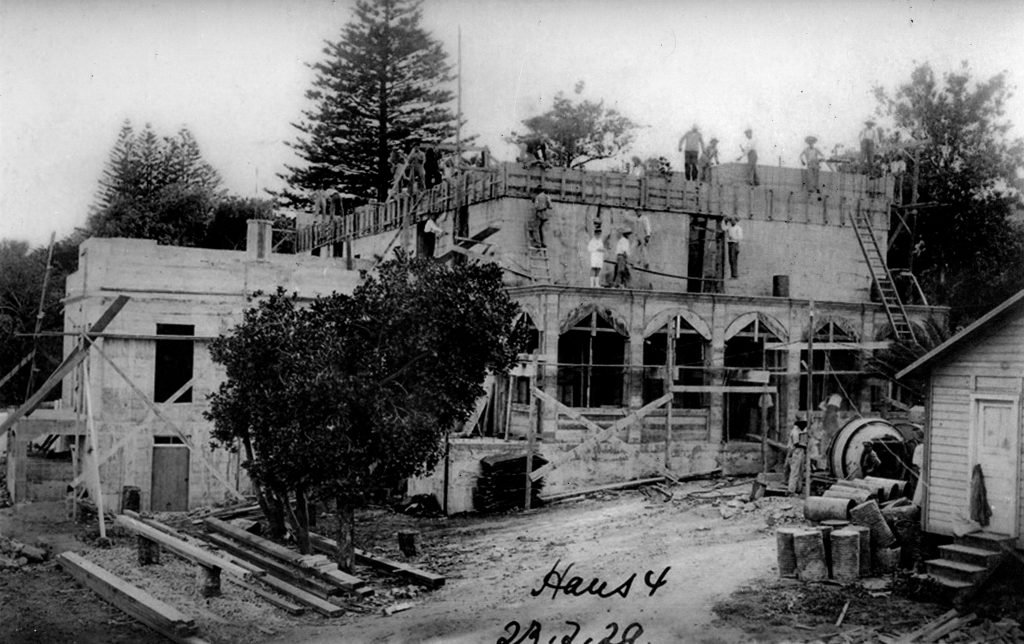 |
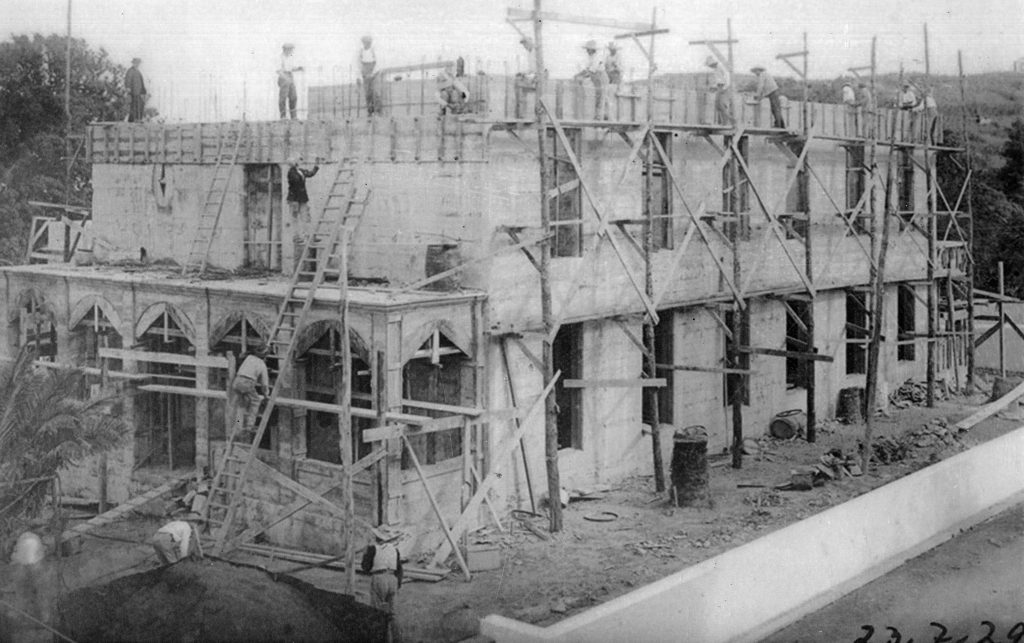 |
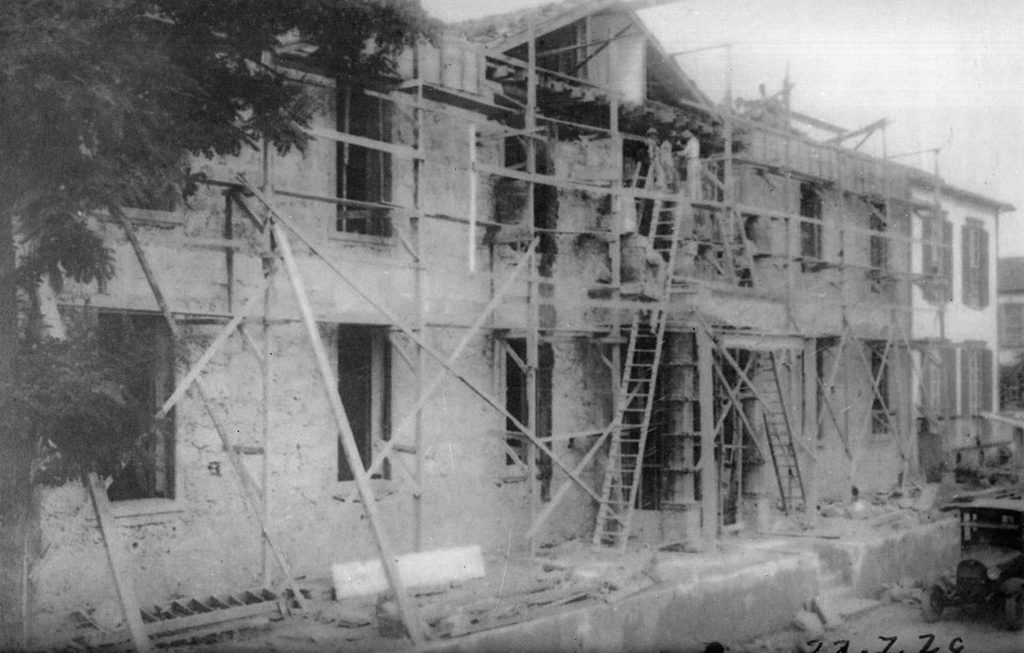 |
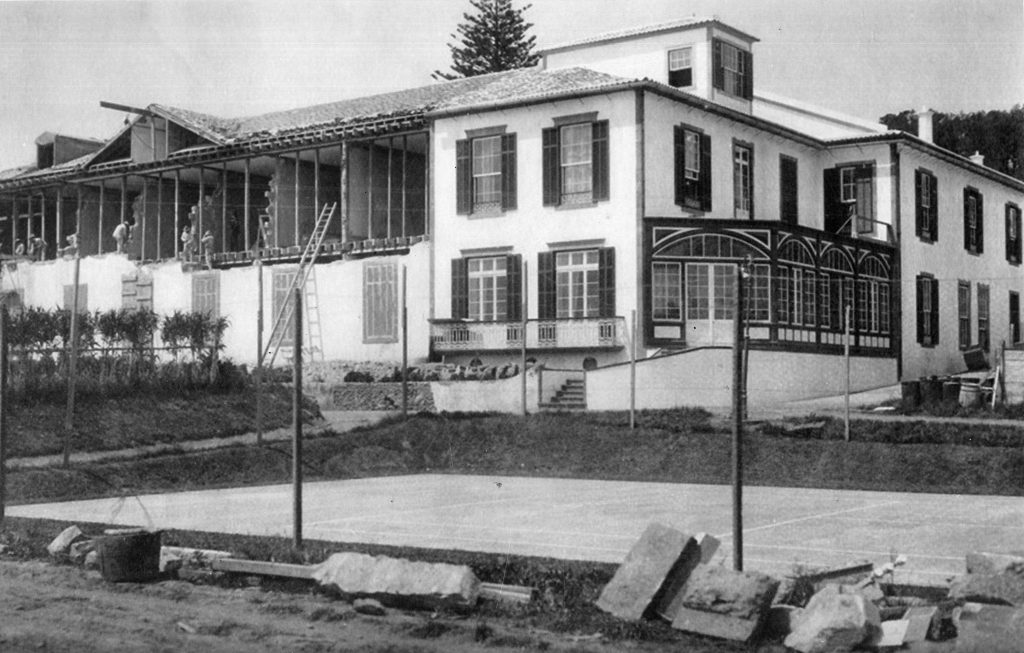 |
The proto-Modernist Late-Romanesque architecture and the existence of ceremonial areas – in particular the Winter Garden with German Imperial heraldry (the empire came to an end in 1918) – reveal how the “colony” was an affirmation of German power on the international stage.
At its height, in the 1930s, the compound was walled and included residential buildings (1-5, 9), gardens and a farm (6, 8 and 11), leisure and sports facilities (7 and 8), and a school for the employees’ children (10).

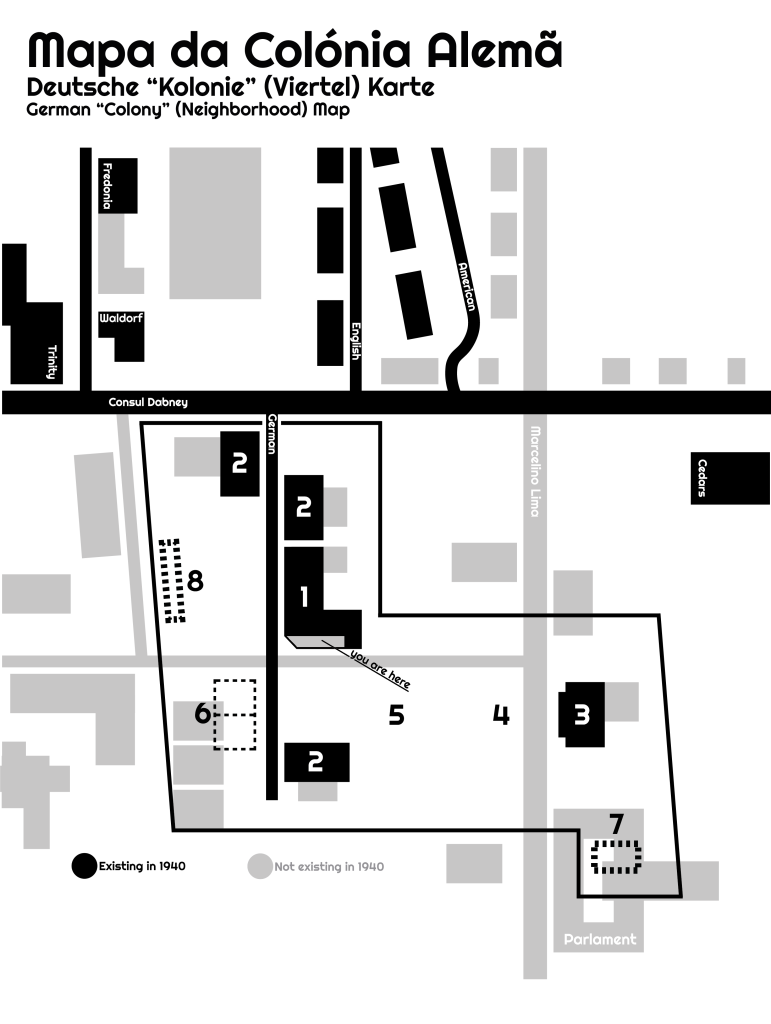
1 – Edifício do Relógio (Clock Building) – accommodation for unmarried employees with a cafeteria and social areas
2, 3 and 4 – Family residences – six semi-detached houses for married employees
5 – Residence of the director of DAT
6 – Director’s small farm/orchard (walled)
7 – DAT tennis court and lawn
8 – Garden (with trees, flowerbeds and a small pond)
9 – German teacher’s house (no longer standing)
10 – German school and carpenter’s workshop (no longer standing)
11 – Farm/pasture land owned by DAT but outside the compound walls
DAT Timeline
1899 – Contract for the Germany-Azores connection and creation of Deutsch-Atlantische Telegraphengesellschaft (DAT)
1900 – Borkum-Faial connection and setting up of DAT in Horta
1905-1912 – Building of the “German Colony” (in its initial iteration)
1912 – Date of the stained-glass windows with German Imperial heraldry (the original location is unknown)
1914 – Start of World War I and cutting of the German Emden-Horta cable
1916 – Portugal’s entry into the war on the Allied side, seizure of DAT properties and detention of Germans on Terceira island
1924 – New concession awarded and return of the properties
1926 – Major earthquake in Faial destroys part of the city and affects the “German Colony”
ca. 1928/1930 – Rebuilding of the residential quarter (in its current iteration)
1939 – Start of World War II and cutting of the German cables
1943 – Definitive departure of DAT personnel
1974 – Acquisition of the quarter by the Portuguese state
1976 – Occupation by departments of the newly created Regional Azores Govt.
1980-1990 – Temporary occupation of Edifício do Relógio by the Regional Legislative Assembly
2012 – Classification of the compound as a publicly listed property and restoration of the stained-glass windows
Stained-glass windows
The set of stained-glass windows with the Imperial heraldry of the states that made up the German Empire (1871-1918).
Manufactured by Schneider und Schmolz in 1912 and restored by Paulo Patacão in 2012.
Placed here in the late 1920s, within the context of the Weimar Republic, after the World War I.
The DAT buildings now house departments of the Azores Regional Government and this space is used for official meetings and events.
